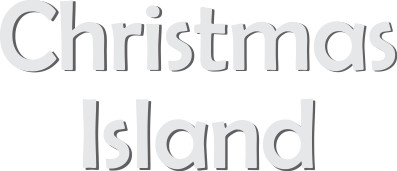
The Christmas Island is an offshore territory of Australia in the Indian Ocean. It is also known as Kiritimati, in its local dialect. Captain William Mynors sailed through the islands on 25th December, 1643 and hence, named it as Christmas Island. It is an untouched habitat flourishing in isolation, away from any human disturbances and one which is of immense interest to ecologists. The unique and natural topography of this island boasts of certain flora and fauna which cannot be found anywhere else in the world. Most of its coastline is made up of rocky cliffs ranging up to a height of 65 ft, but there are also few beautiful sand and coral beaches along the coast. This small island is also home to ancient and pristine rainforest, marine life, limestone and cliffs. Nature lovers are drawn here because of its unique rainforests, number of seabirds, the rugged landscape and the mangrove forests surrounded by inviting crystal clear waters. The spectacular sight of the migration of millions of Christmas Island red crab towards the sea makes the land resemble a huge red carpet. Let us learn more about Christmas Island.
Christmas Island is located in south–eastern Asia in the Indian Ocean, lying to the south of Indonesia. Covering an area of about 135 sq. km, it lies between the geographic coordinates 10°30’S latitude and 105°40’E longitude. Stretching a coastline of 138.9 km, it is about three–quarters the size of Washington, DC and comparatively ranks 222nd in the world.

Christmas Island enjoys a tropical climate with monsoon from December–April and a dry season of heat and humidity from May–November moderated by trade winds blowing from the south. The annual average temperatures reach a maximum of 28°C in April to a minimum of 22°C in August. The terrain is made of rising steep cliffs along the coast leading to the formation of steppes–like plateaus. The highest point of elevation is the Murray hill at 361 m and the lowest point is Indian Ocean at 0 m. The island is mainly tropical rainforest and majority of the portion of land is a national park. The only natural resource found here in abundance is phosphate. The narrow reef on the fringe, surrounding the island, can be a hazard to passing ships. Loss of rainforest due to phosphate mining is a cause of concern here.

Being a remote island, most of the fauna in Christmas Island has been introduced by the settlers. The vegetation is of rainforest type and includes native flowering plants, some estuarine mangroves and coconut trees. The island is known for its millions of Christmas Island red crabs, largest population of coconut crabs, invasive yellow crazy ant, Hermit crabs, Grapsid crabs and reptiles such as giant gecko, species of skinks and snakes. Mammals such as Christmas Island shrew, flying fox, pipistrelle and birds such as Abbot’s booby (endangered), frigate bird, thrush and emerald dove are found.


The culture of Christmas Island has been greatly influenced by the traditions and cultures of the early settlers such as the Chinese, Malay and some Europeans. The Chinese and the Malay established their own customs, strong religious practices and ethnic festivals which is still evident throughout the celebrations of their different festivals and occasions.

Buddhism is the major religion followed by about 70% of the islanders and there are also followers of Christianity, Islam and others beliefs on the island. English is the official language of the Christmas Island. Chinese and Malay is also spoken by some of the islanders.

The diet of the people on Christmas Island is a combination of the Australian and Asian cuisines. The soil of Christmas Island does not support the growing of crops but some vegetables grown here include Bok choy, Choy sum, kangkong, mustard, eggplant and okra. Coconut is their staple food. The islanders rely on supplies from mainland Australia and processed and canned foods are very popular. Chicken was introduced later to the island and dishes made from chicken are now popular along with dishes that include the local Christmas Island red crab.

The main economic activity on Christmas Island is tourism and phosphate mining. Provision of services has become possible due to setting up of Immigration Detention Centre and various other Government departments such as education, health, police, customs, quarantine and defence. The industries which contribute to development are tourism and phosphate extraction. Its imports are consumer goods whereas it exports phosphate.

G Kowledge of | 0 Comments >>
0 Comments
Leave Comment
Your email address will not be published. Required fields are marked.